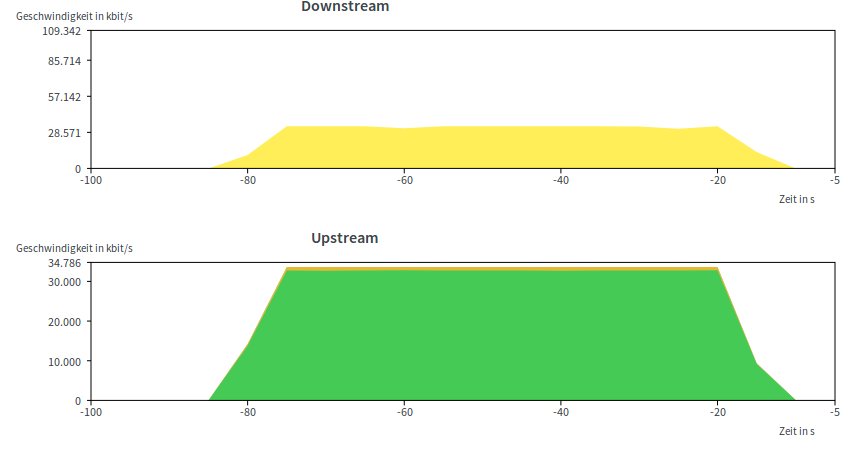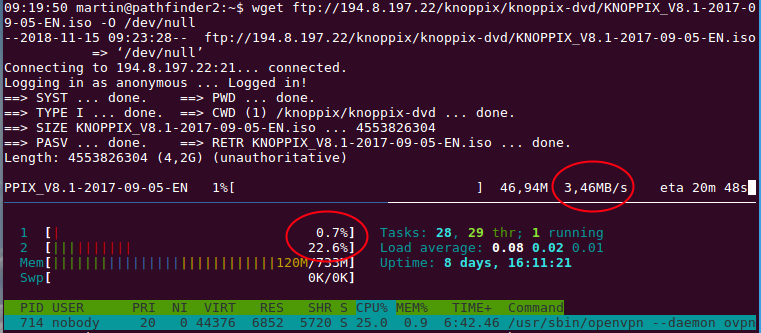 I’m using OpenVPN for many years now and while in the past the uplink speed of my DSL connection at home was the limiting factor when it came to throughput, this might not be the case anymore. I was therefore keen to check if my current OpenVPN setup in a virtual machine on an Intel i3 based server can still handle the theoretical maximum throughput of 35-40 Mbit/s, which is the uplink speed of my vectorized VDSL line.
I’m using OpenVPN for many years now and while in the past the uplink speed of my DSL connection at home was the limiting factor when it came to throughput, this might not be the case anymore. I was therefore keen to check if my current OpenVPN setup in a virtual machine on an Intel i3 based server can still handle the theoretical maximum throughput of 35-40 Mbit/s, which is the uplink speed of my vectorized VDSL line.
 The two pictures in this post show that the OpenVPN server can easily saturate the available bandwidth. The first picture shows downlink (yellow) and uplink (green) throughput on my DSL line and that the uplink is fully utilized by a file transfer inside the VPN tunnel.
The two pictures in this post show that the OpenVPN server can easily saturate the available bandwidth. The first picture shows downlink (yellow) and uplink (green) throughput on my DSL line and that the uplink is fully utilized by a file transfer inside the VPN tunnel.
The second picture shows the file transfer speed and the processor load on the server running OpenVPN, which is around 23% on one CPU and 0% on the other. In other words, there is ample processing capacity on the VM left for future line upgrades.
Now the only thing I need is more uplink speed. It’s unlikely I will get more any time soon, however, because even upgrading my line from 100 to 250 Mbit/s once super-vectoring becomes available will not increase my uplink speed beyond the 40 Mbit/s that I currently enjoy.